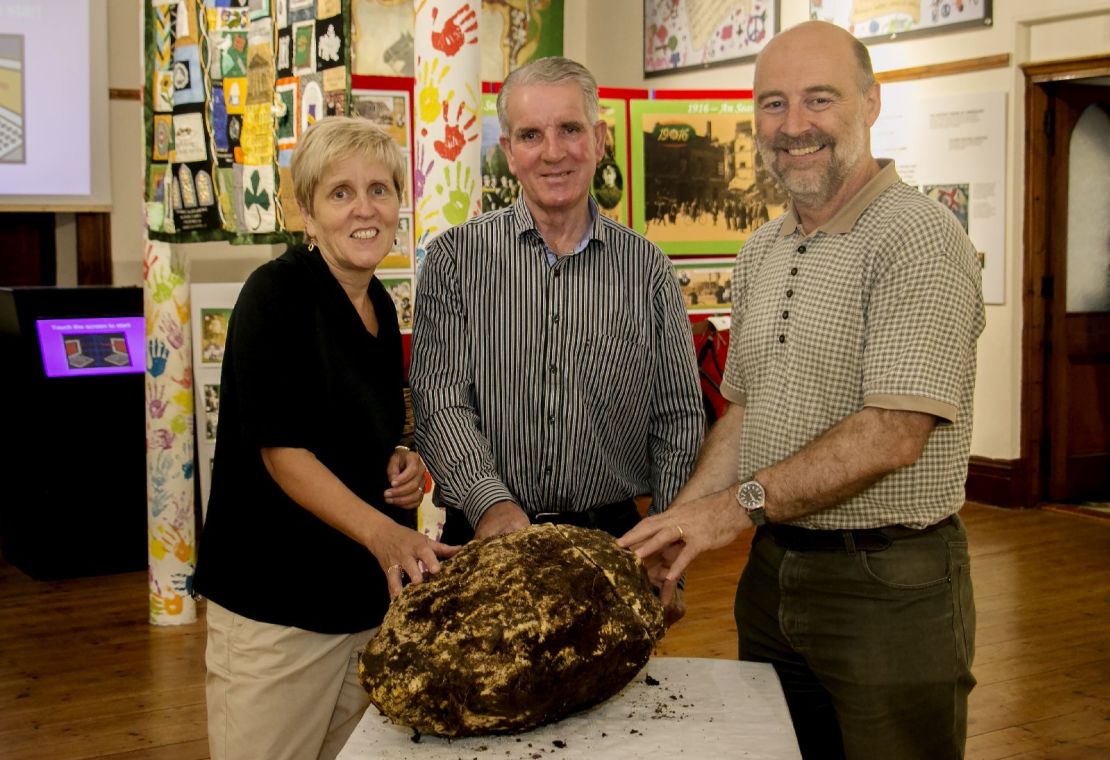Story highlights
Bogs offer fridge-like conditions, perfect for storing butter
It's not the oldest lump found -- one discovered in 2013 was 5,000 years old
Turf cutter Jack Conaway was cutting peat for fuel in the Emlagh bog when he made a surprising and smelly discovery.
Buried 12 feet under, Conaway found a massive 22 pound (10 kilogram) chunk of butter estimated to be 2,000 years old.
Oddly enough, such encounters are not unusual.
Hundreds of lumps of bog butter have been found in Ireland and Scotland, dating back over thousands of years, according a study published in The Journal of Irish Archaeology.

In 2013, a fellow turf cutter in County Offaly found a massive container holding 100 pounds (45 kilograms) of bog butter believed to be 5,000 years old.
The Cavan County Museum says in medieval times, butter was a luxury product that was used to pay taxes and rents.
“It was sometimes used as a offering to the spirits and gods to keep people and their property safe – when used as offerings it would have been buried and never dug up again,” the museum said on its website.
Conditions in bogs – low temperatures, high levels of acidity and minimal oxygen – make them effective refrigerators, the museum said.
Archaeologists say that bog butter is crumbly, with a waxy texture and overwhelming cheese smell.
Tiny coffin reveals youngest preserved fetus from ancient Egypt
However, despite bog butter being technically edible, researchers advise against eating it.




